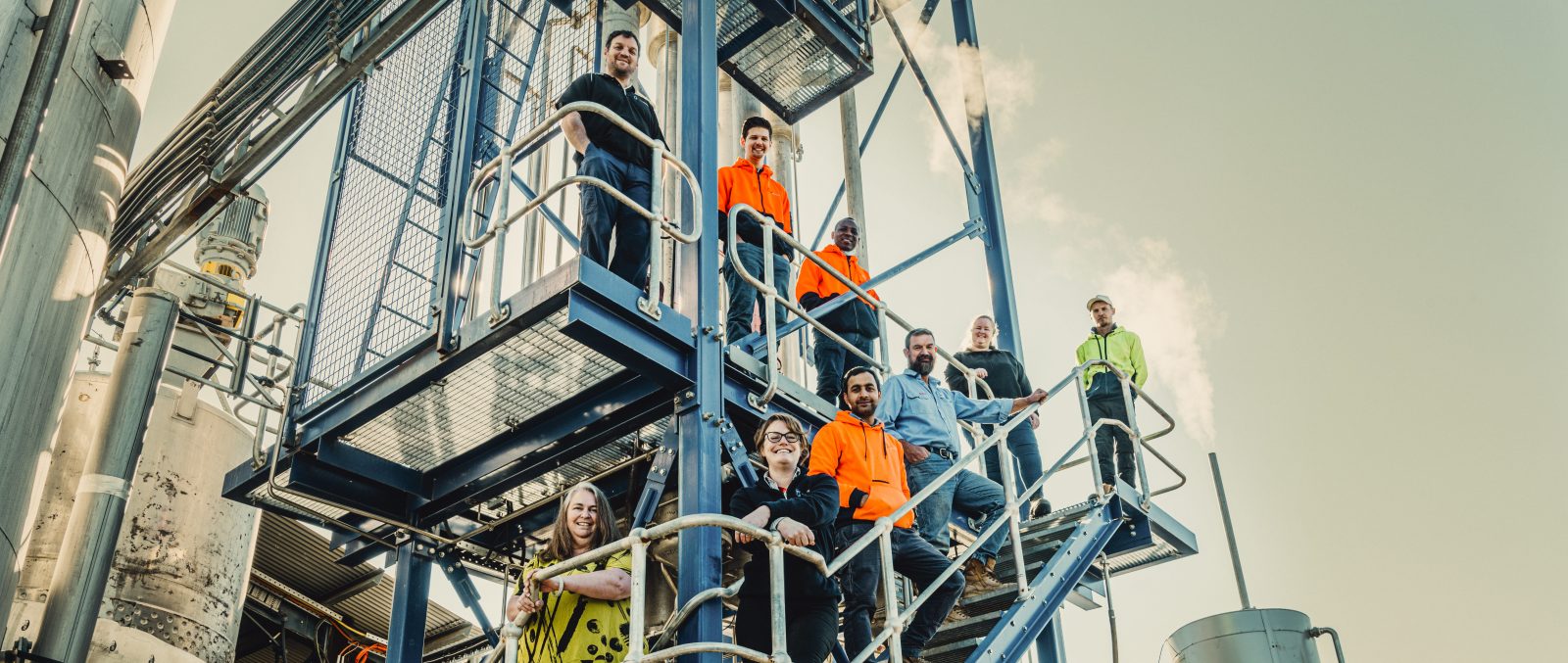Spanning 20 growing levels, a 2,126-sqm workshop for future farm construction, a 446-sqm cold room and a full R&D wing, Stacked Farm’s Arundel facility is fully-automated, and well into production.
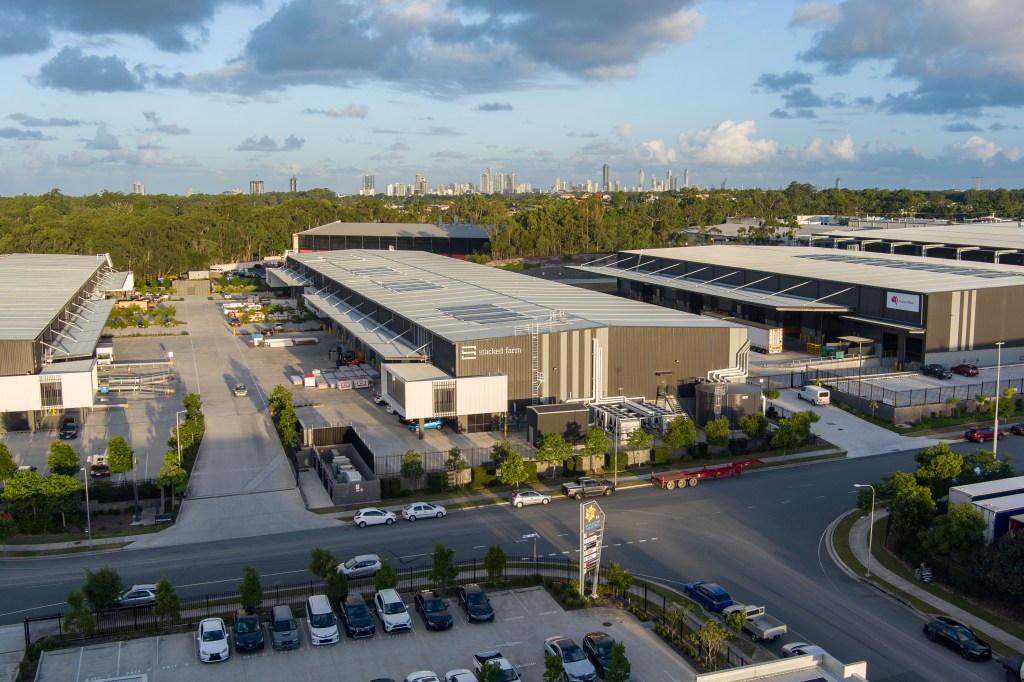
Daniel Tzvetkoff fancies himself a foodie. It’s a bit of a turnaround for the 40-year-old, who in a previous life, brought down some of the world’s biggest online gambling companies. The former tech-founder-turned-informant for the US authorities made a fortune abroad and early in life from his online payments processing company, Intabill.
“I started a company [Intabill] that just blew up overnight,” he says. “But, then the US had a whole shift where gaming became illegal – also overnight.”
Long story short: he got in trouble, lost it all, and returned to Australia. But his passion for making Australian produce taste more like it was grown in the Mediterranean, coupled with his friendship network of restauranteurs and their Sunday cook-ups, led the IT whiz to look into vertical farming, and launch Stacked Farm in 2017.
“It started as a hobby in my backyard, but a couple of my friends wanted to know how the produce I was growing was so good. One thing led to another, and a few weeks later I decided to give it a shot full-time.”
“It” is Stacked Farm, an indoor vertical farm, that began with a pilot 400-square metre facility in Burleigh Heads, Queensland. That facility shut down in 2021, and the company has now hit full-production on its 6,588-square metre Arundel facility (2,144-square metre of which is the operating farm footprint), which completed its first full harvest in January this year. The new facility is engineered to output more than 400 tonnes of herbs and leafy greens per year, which is where Tzvetkoff reckons vertical farming will have the greatest impact – along with soft fruits like berries and tomatoes. Its big draw-card is that the farm requires just six employees for operation and maintenance, and can enable full growth of a crop in just 16 to 31 days depending on the crop variety (compared to 45 to 80 days at a traditional farm).
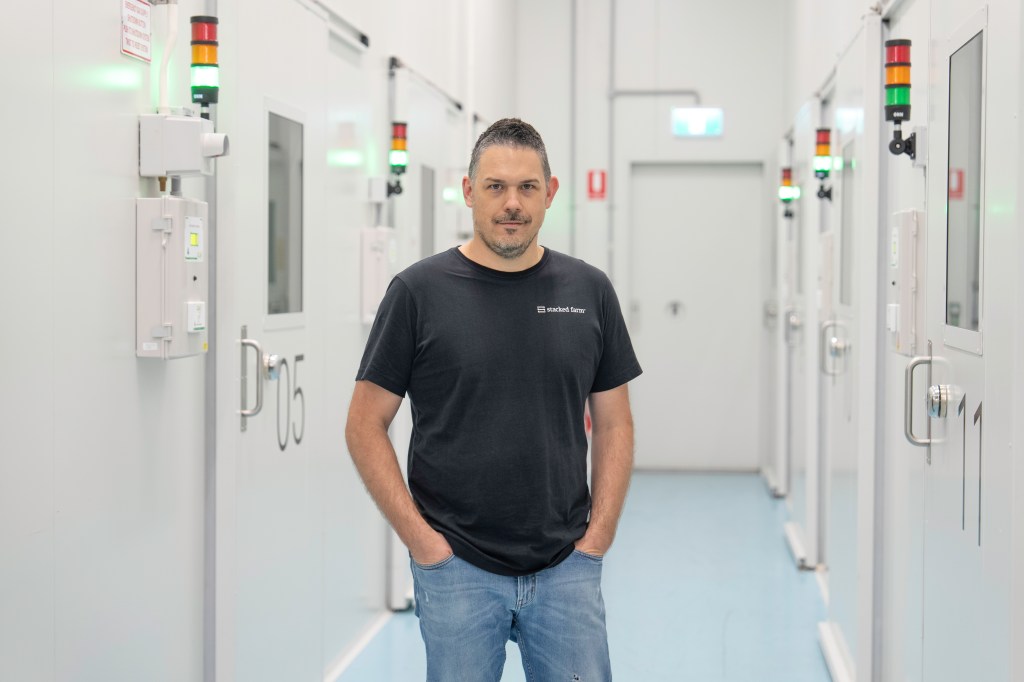
Stacked Farm has inked a few deals with major retailers for its produce, including burger chain Grill’d. Its Arundel team developed a bespoke lettuce for the fast-food company, which allows them to get 70 burgers per kilo of product as opposed to 50 from a standard off-the-shelf product. Stacked Farm says it’s currently entering in long-term agreements with more fast-food retailers and supermarket chains.
“It’s all about efficiency, right? And if they don’t need to wash the product, and its already the right size, thickness and flavour, they remove that wastage out of the process,” he says.
Tzvetkoff says indoor vertical farms have long been seen as a way to combat major weather issues like flooding or heat-waves, as well as quality and supply chain problems. But they’ve also fielded their fair share of controversy, with many around the world struggling to turn profits, or shutting shop entirely. US-based AppHarvest closed down in July 2023; another US player, Fifth Season filed for Chapter 7 bankruptcy near the end of last year; and Infarm quit Europe in June 2023 and entered administration in October. The big hurdle these startups couldn’t jump was the massive cost of energy required to power their farms.
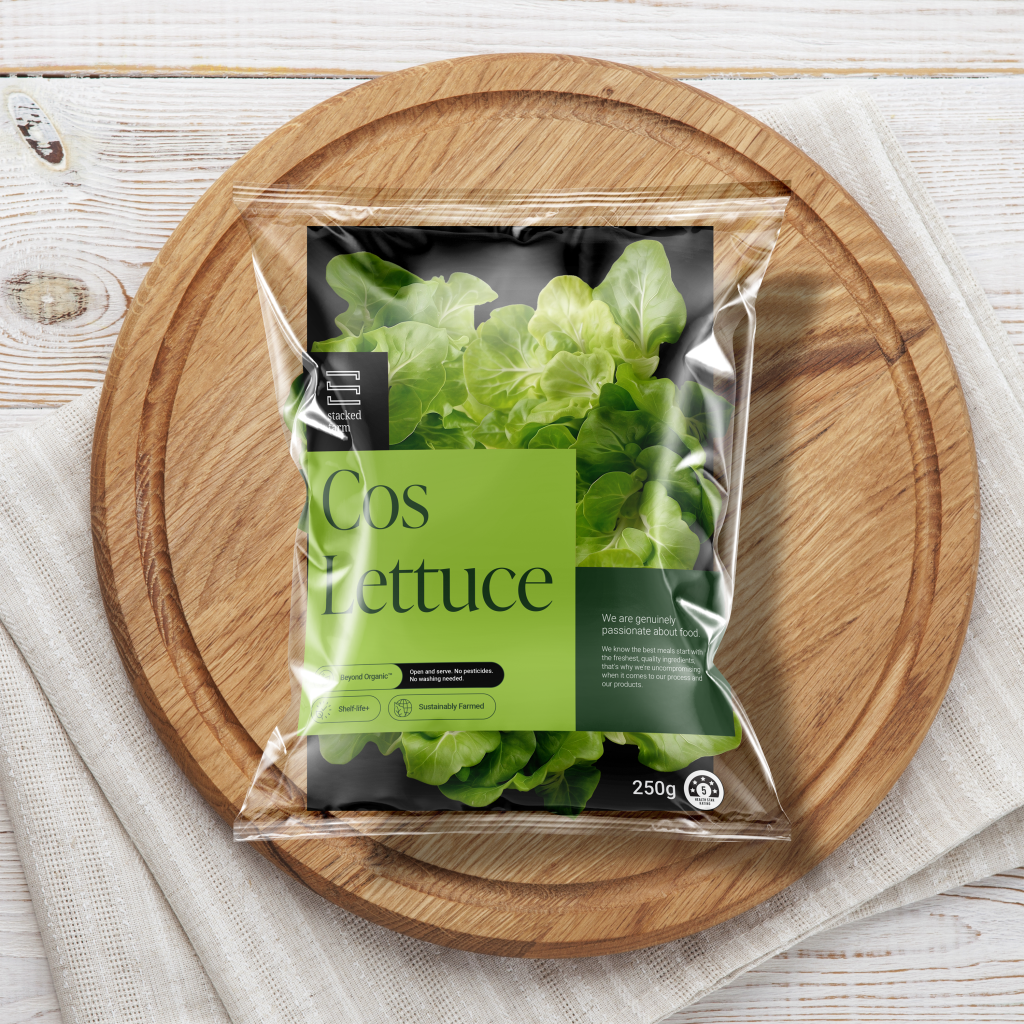
“We were late to entry in the market,” Tzvetkoff says. “We got to see what all the US operators were doing first, and that was a huge advantage because we were able to see what they were doing wrong and test their processes.”
Tzvetkoff and the team made two fast realisations. First: Australia’s fair work policies make running a farm expensive. And second: they’d need cheap energy to grow indoors, which Australia didn’t have.
“We kind of had to rethink the entire business to build an indoor farm that was profitable,” he says. “We focused our energy on automation, firstly. Figuring out where the bottlenecks were and how we could solve those issues.”
They took what he calls the ‘McDonald’s model’ of looking at how produce moved through the facility, and set themselves a target of achieving one tray of produce every 30 seconds, which is the equivalent of 60 bags. Its proprietary machine learning model is key in this process, Tzvetkoff says. Stacked Farm has developed its own recipes within its R&D facility, and cameras in the farm monitor produce and compare results against the results during the R&D phase.
“It can tell us if plants are lagging or ahead, or there’s a quality issue. It keeps an eye on quality control metrics human eyes just can’t see.”
Next, they needed to reduce their power usage, which meant redesigning lighting to become 47% more energy efficient than their competitors. Using less lighting also had a knock-on effect of generating less heat, which meant less energy required to cool the building to the right temperature for produce to grow.
Stacked Farm has patented its lighting and automation technology, which is why the company’s remained in stealth mode for a number of years.
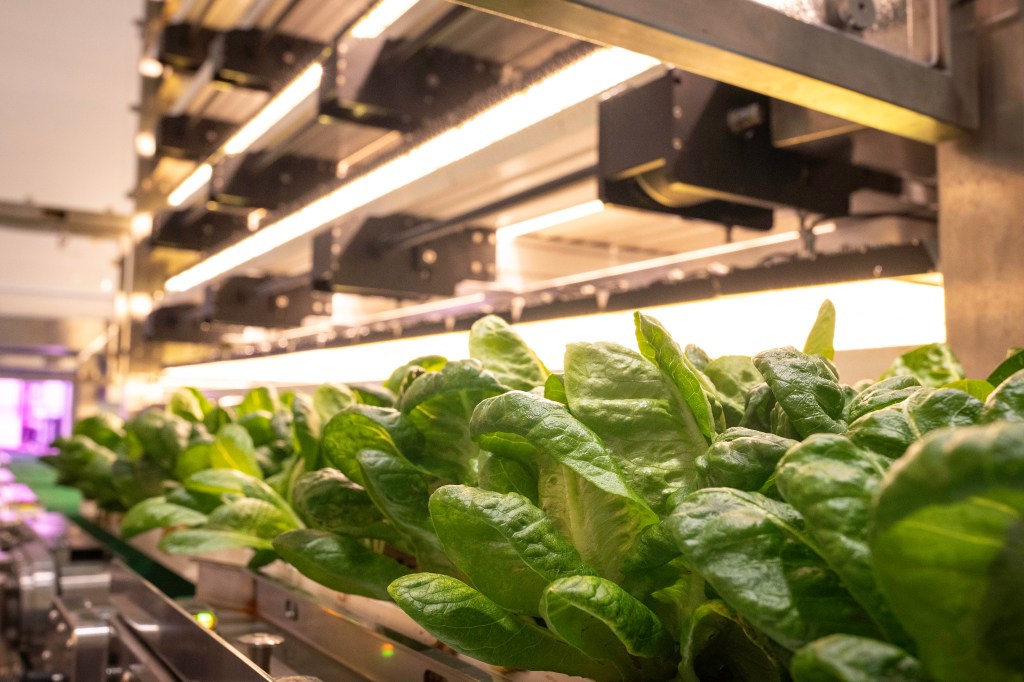
“Investors want to know how you’re going to build a moat – how you’re going to protect your technology,” he says. “Obviously the downside is that you need to disclose your detailed designs, but we’ve tried to give ourselves protection in as many countries as we can for that reason.”
But again, raising capital for a vertical farm against a backdrop of failing vertical farms was tricky. The company managed to get Magnetar Capital on board, which has so far invested about $40 million into the business, after some deep due diligence into Stacked Farm’s points of difference.
“They were able to identify the areas that we focused on as problems that those [collapsed] farms previously faced. Once we had that first big name on board, it started to become easier. But raising capital in general hasn’t gotten any easier – it’s still a very difficult time for most startups.”
The company is currently raising again for completion of its next facility in Melbourne. And it needs it: these endeavours are extremely capital-intensive. Tzvetkoff estimates the 10,000-square metre Melbourne facility will cost around $75 million to fit-out with Stacked Farm’s patented equipment and tech, on top of the $50 million to develop the building itself. It’s in the early stages of development, but plans to hold about 25,920-square metres of grow space – six times greater than the Gold Coast facility. This one will operate with just 15 staff, and plans to produce 88,460 bags of 100-gram produce per harvest, with five harvests each week.

But the numbers don’t scare Tzvetkoff, who says the Melbourne facility will generate a $50 million annual return and is expected to yield a return on investment in three years. “You’re working with about 10% of the staff of what our competitors do once the farm is open, and then there’s the energy reduction as well. When you start to look at what we’re putting out on a per-kilo basis, it’s either at or slightly less than traditional farming.”
After Melbourne, Tzvetkoff says a site in the US is “not far behind”, with initial plans to set up shop in either California or Nevada. The company, which has 48 staff members (most of which are engineers) says it has ambitious plans to continue to establish two commercial-scale farms per year, with each farm’s annual yield exceeding 3,200 tonnes of fresh produce. That’s the equivalent of nearly 5% of the national production of lettuce and leafy products in 2021-22, and matches consumption increasing at 5% each year.
“At the moment, a lot of the outdoor farms are bringing in temporary pickers or overseas labour, but the government has been quite restrictive as to who and how they let people in with these roles,” he says. “I think there’s no real other way to go than the way we’ve gone with lettuce and the likes, which is to automate it as much as we can.”
Look back on the week that was with hand-picked articles from Australia and around the world. Sign up to the Forbes Australia newsletter here or become a member here.



